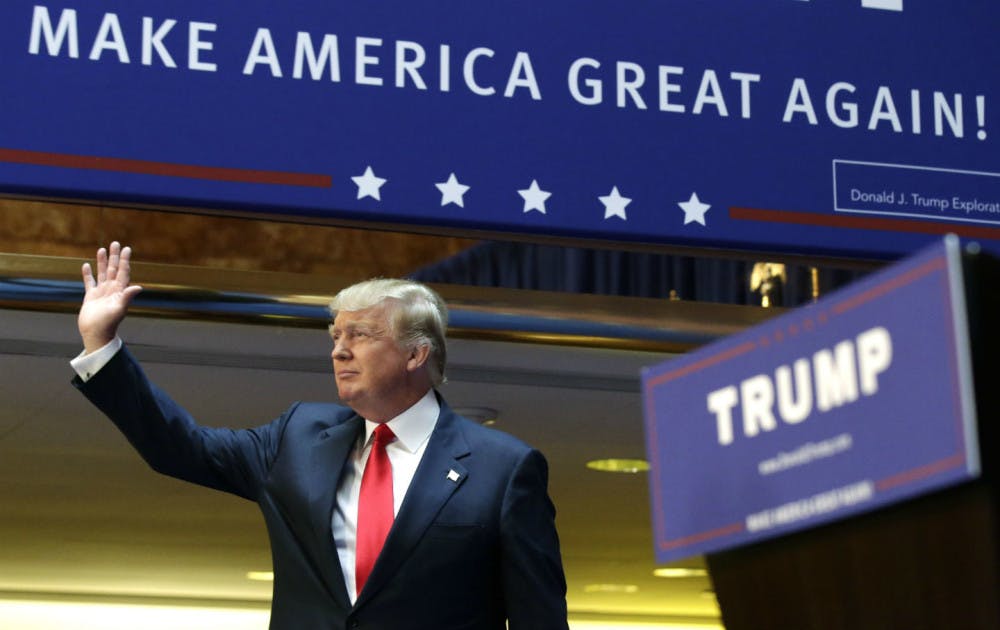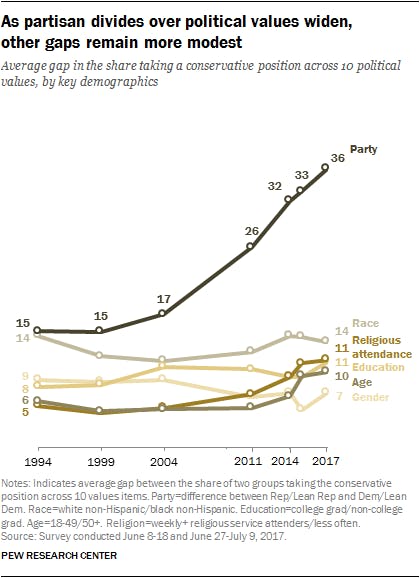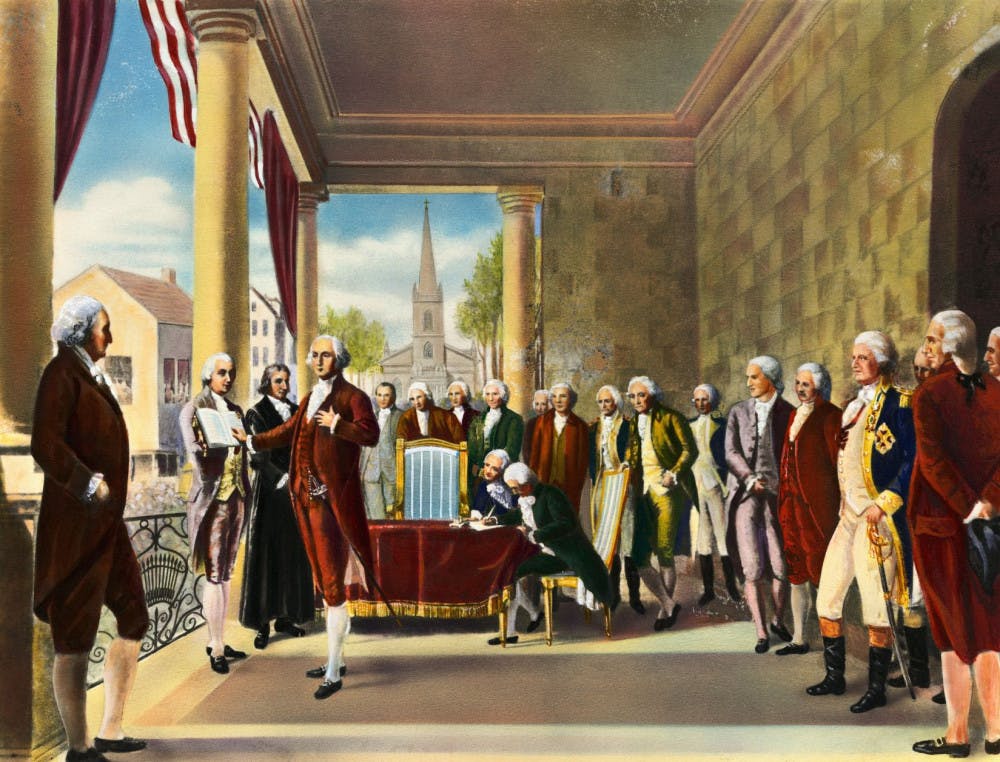
Donald Trump at a rally during his presidential campaign.
After Donald Trump was elected president, 77 percent of Americans felt that the country became much more divided, according to a Gallup poll published on Nov. 21, 2016. The second-highest poll percentage was 66 percent in response to the 2012 presidential election.
According to Gallup, over the past 20 plus years the nation has been seen as more divided than united, with the exception of two post-9/11 surveys.
It’s rare for America to see so much division along political party alignments. According to a Pew Research Center poll from Oct. 2017, the gaps on different political views have widened since Trump became president.
The issues of the role of government, immigration, diversity and the economy have all been platforms on which Democrats and Republicans can’t seem to agree on. Each party has become increasingly hostile when it comes to views of the opposing party.
When it comes to immigration, abortion, gay rights and gun laws, Democrats tend to be more in favor of progressive solutions. Pro-immigration, pro-choice, pro-same-sex marriage, pro-gun laws: you name it. Republicans tend to believe the exact opposite, and the people in the middle are often forgotten and neglected.
There’s a stigma surrounding far-left and far-right people that makes them out to be “snowflakes” and “deplorables”. We’ve reached more party-polarization in the United States in the past decade than ever before because everything has run on the single dimension of Republican vs. Democrat.
The division between both major parties has increased 140 percent since 1994, according to Pew. In 2004, Democrats and Republicans shared more moderate ideas, with only 68 percent of Democrats leaning farther to the left and 70 percent of Republicans leaning farther to the right.
Today, those percentages have increased 42.6 percent and 35.7 percent respectively, with 97 percent of Democrats identifying as more liberal and 95 percent of Republicans identifying as more conservative.

This graph from Pew Research center shows the gap between political parties has widened over the last few decades.
The divide doesn’t just stop at political ideologies - 44 percent of Democrats and 45 percent of Republicans have extremely negative views on the other party. In 1994, those percentages were both less than 20 percent.
The history dates back to 1932 when the Democratic party became dominant in US politics over a generation for keeping a New Deal coalition together, Northern urban progressives including and Southern pro-segregationists.
In 1964, the Democrats became the party of civil rights, acknowledging the one idea that was bottled up and unrecognized in order to preserve the alliance between the Democratic party’s support from both the North and South.


After this, the Republicans became better aligned with the South - especially on issues of race. Soon enough, conservative Republicans replaced Democrats in the House of Representatives and Senate.
By 2011, the transition was complete and Democrats moved the center of their ideologies to more urban areas to fuse social and economic liberalism together. Republicans have resonated more with lower to middle class citizens in rural areas.
It’s interesting to see how divided the country has become over time, considering George Washington himself never wanted partisanship to conquer politics or the country. During his presidency, political parties started to form and drew a line of bitterness and destructiveness.

A painting of George Washington taking the oath of office of Federal Hall.
Washington believed that political parties had the power to destroy the unity holding the nation together, which was already fragile. He saw the dangers of sectionalism and feared that it would pit political factions against each other in a way that the country couldn’t handle.
His fears have grown to be true over the last few decades, as every idea and belief is strictly associated with a political party. Of course, America has changed since 1789 and will continue to change.
It should change to work toward unity, though - not division.









